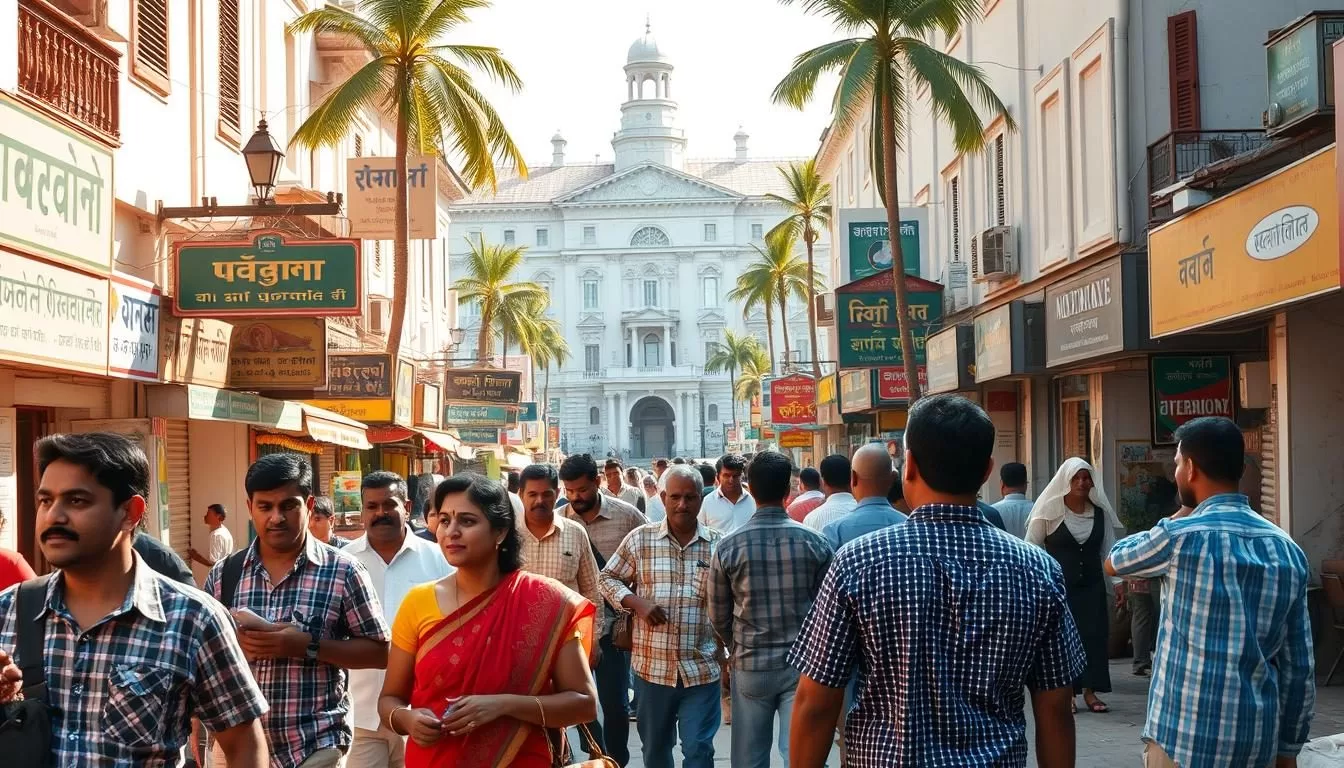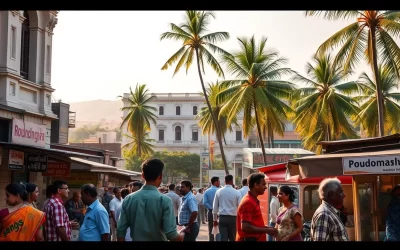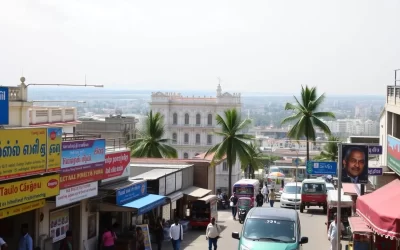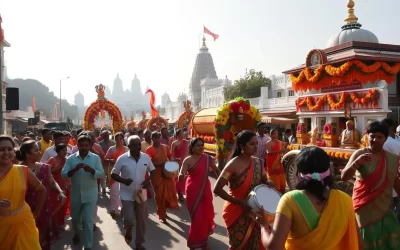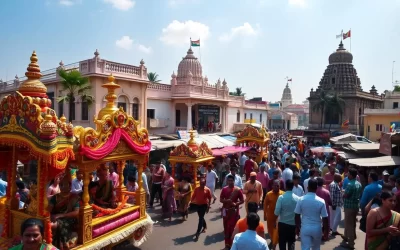You’re about to explore the unique cultural landscape of a union territory that reflects a blend of historical influences. The territory, known for its linguistic diversity, comprises four geographically disconnected districts.
As you delve into the language profile of this territory, you’ll discover the official language and the languages that are commonly spoken across its districts. The population presents an interesting linguistic profile, shaped by its historical connections and geographic position.
This article provides an overview of the language situation, helping you appreciate the territory’s distinctive identity within the diverse linguistic landscape.
The Linguistic Landscape of Puducherry
As you explore the Union Territory of Puducherry, you’ll discover a unique linguistic landscape shaped by its geography and administration. The territory’s distinct configuration, comprising four separate districts, has given rise to a fascinating language mosaic.
Geographic and Administrative Overview
The Union Territory of Puducherry is characterized by its four unconnected districts: Puducherry, Karaikal, Yanam, and Mahé. Puducherry and Karaikal are enclaves of Tamil Nadu, while Yanam and Mahé are enclaves of Andhra Pradesh and Kerala, respectively. This unique geographic setup has contributed to the territory’s linguistic diversity, with each district having its own distinct linguistic character. The total area of Puducherry is 483 km2, with a population of 1,394,467 as per the 2011 Census.
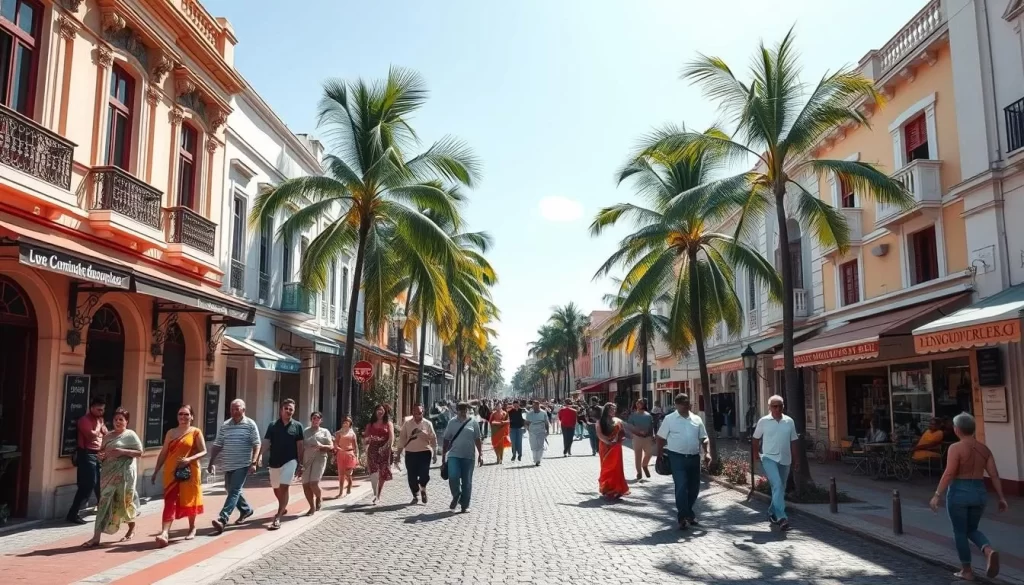
Language Diversity in the Union Territory
The language patterns in Puducherry are influenced by the cultural and linguistic characteristics of its neighboring states. The territory’s language diversity is a reflection of its complex history and cultural heritage. You can observe how the population distribution across the four districts has created a unique linguistic landscape, with each region having its own distinct language preferences. The cultural influences from Tamil Nadu, Kerala, and Andhra Pradesh have significantly shaped the language spoken in each area, resulting in a rich linguistic tapestry.
Historical Evolution of Languages in Puducherry
You might be surprised to learn how nearly 300 years of French colonial history have left a lasting legacy on Puducherry’s languages. Thehistoryof this union territory is a complex tapestry woven from various cultural and linguistic influences.
French Colonial Influence on Language
In 1674, Pondicherry became a French colony, marking the beginning of a significant period in the region’slanguagedevelopment. Over theyears, French became an integral part of the region’s linguistic identity. The French colonial empire’s influence extended beyond Pondicherry to other enclaves such as Chandernagor, Mahé, Yanam, Karaikal, and Masulipatam, forming the colony of French India. This period saw the establishment of French as an officiallanguage, a status it maintained even after independence, a phenomenon unique to Puducherry in the Indian context.

Post-Independence Language Policies
The transfer of French India to the Republic of India, which occurred de facto on November 1, 1954, and de jure on August 16, 1962, marked a significant turning point in thehistoryof languages in Puducherry. During this period, the territories were integrated into the Indian union, with four enclaves forming the present-day union territory of Puducherry, while Chandannagar merged with the state ofWest Bengal. The transition from French to Indian administration had a profound impact on language policies, with thecentral governmentplaying a crucial role in shaping the linguistic landscape. This period was critical in establishing the current language framework, where French continues to hold a specialplacein Puducherry’s official language policies, distinguishing it from other regions in India.
| Year | Event | Impact on Language |
|---|---|---|
| 1674 | Pondicherry became a French colony | French influence on local languages began |
| 1954 | De facto transfer to India | Transition from French to Indian administration started |
| 1962 | De jure transfer to India | Final integration into India, shaping current language policies |
Thisarticleexplores the intricateyearsof transition and their lasting impact on Puducherry’s linguistic identity, making it a unique culturalplacewithin India.
Official Languages of Puducherry (UT), India
Puducherry, a union territory in India, boasts a unique linguistic profile with multiple official languages. This distinctiveness is a reflection of its rich cultural heritage and historical background.
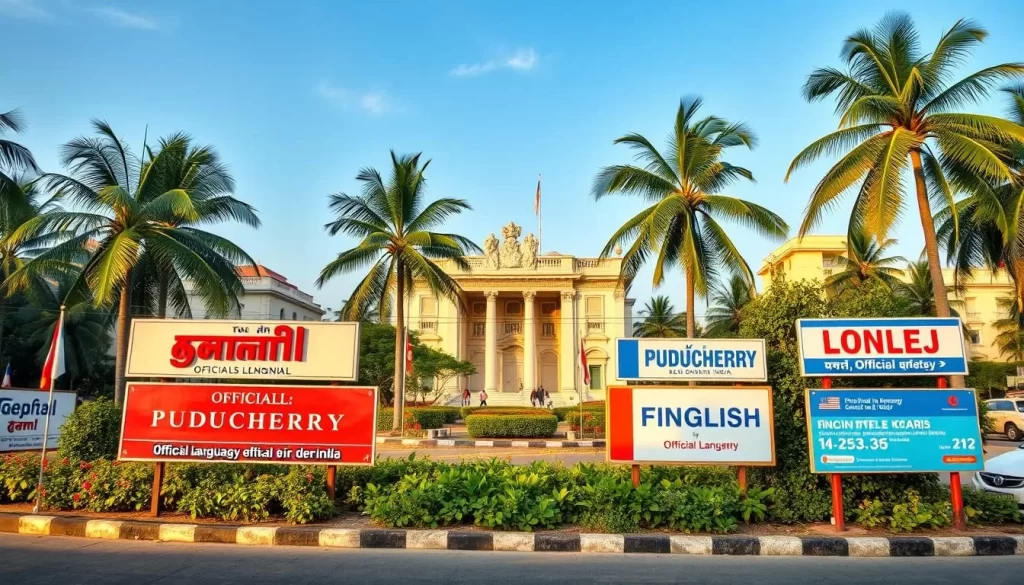
Tamil: The Primary Official Language
Tamil is recognized as the primary official language in Puducherry, particularly in the regions of Puducherry and Karaikal. This status is due to the demographic dominance of Tamil-speaking populations in these areas. As the primary official language, Tamil plays a crucial role in the administration and daily life of the territory.
Malayalam and Telugu: Regional Official Languages
In addition to Tamil, Malayalam and Telugu have been granted regional official language status in specific areas. Malayalam is the official language in Mahe, while Telugu holds this status in Yanam. This recognition reflects the linguistic diversity across the disconnected regions of the union territory.
English: Administrative Language
English serves as an important administrative language throughout Puducherry, facilitating governance and communication across different regions. Its use ensures that the administration remains efficient and accessible to people familiar with English.
French: A Unique Official Language Status
Perhaps most distinctively, French maintains its official language status in Puducherry due to specific provisions in the Treaty of Cession. This unique arrangement reflects the territory’s colonial heritage and historical ties with France. The continued recognition of French underscores Puducherry’s cultural and linguistic diversity.
The official language policy of Puducherry, recognizing five different languages, is unparalleled in any other union territory of India. This multifaceted approach to language reflects the territory’s complex history and cultural richness.
Tamil: The Predominant Language of Puducherry
Tamil stands out as the most widely spoken language in Puducherry, shaping the territory’s cultural identity. According to the 2011 census, Tamil is the major language spoken by 88.22% of the population. This dominance is largely due to the territory’s geographic and cultural proximity to Tamil Nadu, a state where Tamil is the primary language.
Demographics and Distribution
The demographic distribution of Tamil speakers in Puducherry reveals a significant concentration in the Puducherry and Karaikal districts. As you explore the territory, you’ll notice that Tamil is not only widely spoken but is also the language of everyday life, commerce, and administration in these regions. With over 69 million speakers, Tamil is a vital part of the territory’s identity.
| District | Tamil Speakers (%) |
|---|---|
| Puducherry | 85% |
| Karaikal | 90% |
| Mahe | 5% |
| Yanam | 10% |
Cultural and Literary Significance
Tamil is one of the oldest living languages in the world, with a rich tradition of literature and culture. Its significance extends beyond being a means of communication; it is a carrier of the territory’s heritage. In Puducherry, Tamil is celebrated through various cultural events and literary works, reinforcing its importance in the daily lives of the people. The deep cultural connections between Puducherry and Tamil Nadu have further solidified Tamil’s predominance in the territory.
Understanding the cultural and literary significance of Tamil helps you appreciate why it remains the most widely used language in everyday life, commerce, education, and administration throughout most of the territory. Its presence is a testament to the territory’s history and its connection to the neighboring state of Tamil Nadu.
Language Distribution Across Puducherry’s Districts
As you explore the linguistic landscape of Puducherry, you’ll notice a diverse distribution of languages across its districts. The union territory of Puducherry comprises four distinct regions, each with its unique linguistic characteristics shaped by their geographical locations and cultural influences.
Puducherry District: Tamil Dominance
The Puducherry district is predominantly Tamil-speaking, with Tamil being the native language of the majority of its residents. As the largest district in terms of area and population, it reflects the overall linguistic trend of the union territory, where Tamil is the most widely spoken language.
Karaikal: Tamil-Speaking Enclave
Karaikal, another significant district of Puducherry, is also a Tamil-speaking enclave surrounded by Tamil Nadu state. The linguistic patterns in Karaikal closely mirror those of the surrounding region, with Tamil being the dominant language for everyday communication.
Mahe: Malayalam Prevalence
In contrast, Mahe district stands out with Malayalam as the prevalent language, owing to its location as an enclave within Kerala state. This unique linguistic identity distinguishes Mahe from other parts of the union territory, highlighting the diversity of languages spoken across Puducherry.
Yanam: Telugu-Speaking Region
Yanam, situated near Kakinada and surrounded by Andhra Pradesh, is characterized by the dominance of the Telugu language. This district’s linguistic profile is shaped by its geographical isolation and cultural ties to the surrounding Telugu-speaking areas.
| District | Predominant Language | State Surrounding the District |
|---|---|---|
| Puducherry | Tamil | Tamil Nadu |
| Karaikal | Tamil | Tamil Nadu |
| Mahe | Malayalam | Kerala |
| Yanam | Telugu | Andhra Pradesh |
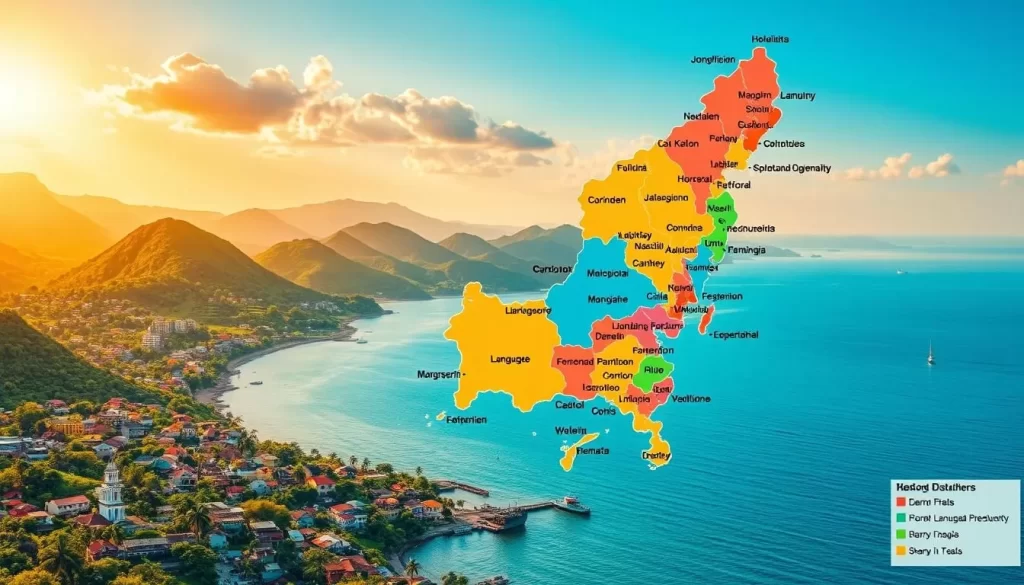
Other Languages Spoken in Puducherry
Beyond the official languages, Puducherry is home to a diverse range of languages spoken by various communities. This diversity is a reflection of the territory’s rich cultural heritage and its history of migration and cultural exchange.
Urdu and Muslim Communities
Urdu is significantly spoken among the Muslim communities in Puducherry, particularly in certain neighborhoods of the capital city and in Karaikal. The presence of Urdu in these areas is a testament to the cultural and linguistic diversity of the Muslim population.
Hindi and Other Indian Languages
Hindi and other Indian languages such as Kannada, Gujarati, and Marathi are spoken by migrants from different states of India who have settled in Puducherry. These languages add to the linguistic mosaic of the territory, reflecting the mobility and diversity of India’s population.
Foreign Languages and Expatriate Communities
Foreign languages, especially French, continue to be spoken by a small number of people in Puducherry, a legacy of the territory’s colonial past. French is still taught widely in schools across the territory. Additionally, expatriate communities, including those in places like Auroville, contribute to the linguistic diversity with languages from around the world.
The linguistic diversity of Puducherry is further illustrated by the following table, which lists some of the languages spoken in the territory:
| Language | Community/Region |
|---|---|
| Urdu | Muslim communities in Puducherry and Karaikal |
| Hindi, Kannada, Gujarati, Marathi | Migrants from various Indian states |
| French | Legacy of colonial past, taught in schools |
| Various global languages | Expatriate communities, especially in Auroville |
Conclusion: Puducherry’s Linguistic Heritage and Future
The union territory of Puducherry presents a fascinating case study in linguistic diversity, shaped by its history and geography. As you’ve explored, Puducherry’s unique status as a union territory with French colonial heritage has created one of India’s most linguistically diverse regions. The official language policy recognizes five languages: Tamil, Malayalam, Telugu, English, and French, making it distinct from other union territories.
The geographic distribution of languages reflects its unusual territorial configuration. Census data shows the resilience of regional languages despite changes in government policies. Understanding Puducherry’s approach offers insights into managing linguistic diversity while respecting cultural heritage.
Puducherry’s linguistic future will evolve as it balances preservation with administrative and educational needs.
